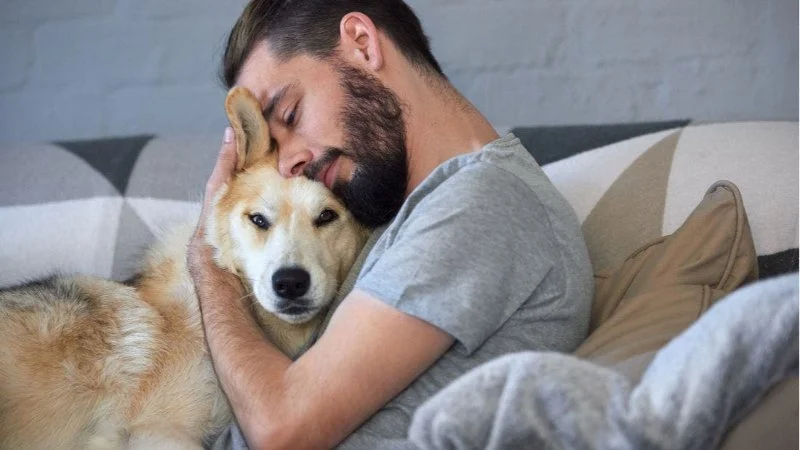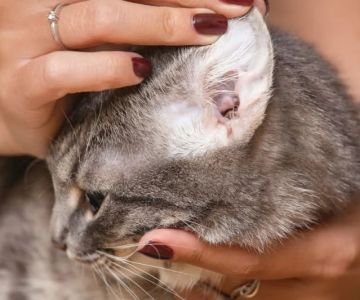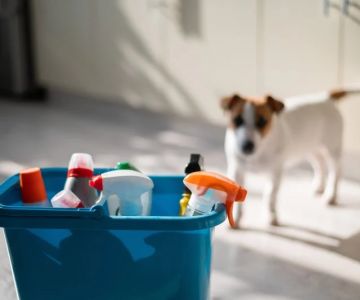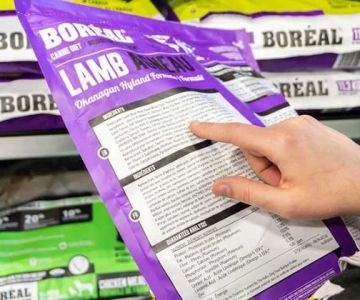
How to Help a Pet Deal with Anxiety After Trauma
- 1. Understanding Pet Anxiety After Trauma
- 2. Signs of Anxiety in Pets
- 3. Helping Your Pet Cope with Trauma
- 4. Calming Techniques and Tips for Pets
- 5. When to Seek Professional Help
1. Understanding Pet Anxiety After Trauma
Just like humans, pets can experience anxiety after traumatic events. Whether it’s a car accident, a loud noise like fireworks, or the loss of a companion, trauma can deeply affect a pet's emotional state. Pets, especially dogs and cats, are sensitive to their environment and can become fearful, stressed, or anxious after an event that disrupts their sense of security.
Recognizing that anxiety is often a reaction to stress and trauma is crucial for any pet owner. Anxiety in pets can manifest in various ways, and understanding its causes is the first step in providing the necessary support and care. In this article, we’ll explore ways to help your pet recover from trauma, reduce anxiety, and restore a sense of calm and comfort.
2. Signs of Anxiety in Pets
It can be challenging to know whether your pet is suffering from anxiety, especially since they can’t communicate in the same way humans do. However, there are common signs that indicate your pet may be struggling with anxiety after trauma:

Petfolk Veterinary & Urgent Care - Scottsdale
ScottsdaleMaricopa CountyArizona
8777 N Scottsdale Rd #307, Scottsdale, AZ 85253, USA
2.1 Changes in Behavior
Pets experiencing anxiety may show noticeable changes in their behavior. These might include becoming more withdrawn, acting aggressively, or suddenly becoming clingy or seeking excessive attention. Some pets may even become more destructive, chewing furniture or scratching at doors or windows.
2.2 Physical Symptoms
Anxiety can manifest physically in pets. You might notice signs like shaking, drooling, panting, or a lack of appetite. These are all common physical symptoms that often accompany stress and anxiety in pets.
2.3 Excessive Barking or Meowing
If your dog or cat is barking or meowing excessively, especially in situations where they were previously calm, it could be a sign of anxiety. This behavior may be a result of their heightened state of alertness and nervousness.
3. Helping Your Pet Cope with Trauma
Helping a pet deal with anxiety after trauma requires patience and a consistent approach. Here are several strategies that can assist in calming your pet and supporting their emotional recovery:
3.1 Create a Safe and Comfortable Environment
Ensure that your pet has a quiet, comfortable space where they feel safe. This could be a cozy bed or a designated room where they can retreat to when feeling overwhelmed. A familiar environment can help reduce anxiety by providing a sense of security.
3.2 Establish a Routine
Pets, especially dogs, thrive on routine. When they experience anxiety after trauma, maintaining a consistent daily schedule for feeding, walking, and playtime can help them regain a sense of control and normalcy. Predictability in their environment can also be calming and reassuring.
3.3 Provide Positive Reinforcement
Positive reinforcement is an excellent way to help your pet cope with anxiety. Rewarding calm behavior with treats, praise, or extra playtime helps reinforce the idea that there is no need to fear. This can help them build confidence and reduce stress over time.
3.4 Use Calming Products
There are several products available to help calm anxious pets. From calming collars and sprays infused with pheromones to specialized anxiety wraps, these products can provide soothing effects for pets struggling with anxiety. Consider incorporating these products into your pet’s environment to help them feel more at ease.
4. Calming Techniques and Tips for Pets
In addition to creating a safe environment and providing positive reinforcement, there are several calming techniques that can help your pet deal with anxiety after trauma. These techniques can be especially useful during moments of acute stress, such as when there are loud noises or when your pet is showing signs of panic.
4.1 Deep Pressure Therapy
Deep pressure therapy is a technique that involves gently applying pressure to your pet’s body. This can be done through calming wraps or even by gently holding your pet. The sensation of pressure can help stimulate the release of calming hormones in their body, promoting relaxation and reducing anxiety.
4.2 Aromatherapy
Aromatherapy is a natural way to calm anxious pets. Essential oils like lavender, chamomile, and valerian root can have a calming effect on pets. However, it’s essential to use pet-safe oils and diffuse them in a well-ventilated area to avoid overwhelming your pet.
4.3 Behavioral Training
Engaging in behavioral training or desensitization can be beneficial for pets recovering from trauma. Slowly exposing your pet to triggers in a controlled and positive manner can help them learn to cope with their fears. A professional dog trainer or animal behaviorist can assist with tailored training programs.
5. When to Seek Professional Help
If your pet’s anxiety continues to persist or worsens despite your efforts, it may be time to consult a veterinarian or animal behaviorist. Severe anxiety can lead to health issues and further behavioral problems if not addressed properly.
5.1 Consult a Veterinarian
A veterinarian can assess your pet’s condition and may recommend medication or further treatment to help manage their anxiety. In some cases, medication can be an effective short-term solution, especially if your pet’s anxiety is preventing them from eating, sleeping, or engaging in normal activities.
5.2 Work with a Professional Behaviorist
If your pet’s anxiety stems from trauma-related behaviors, working with an animal behaviorist can provide specialized guidance. Behaviorists can design customized training programs to address the root cause of the anxiety and offer coping strategies tailored to your pet’s needs.
If you’re looking for pet care products to help manage anxiety or support your pet’s recovery, visit Pet & Puppy for a wide range of calming solutions, including anxiety wraps, pheromone sprays, and more.








 Dr. Aaron Rowland4.0 (7 reviews)
Dr. Aaron Rowland4.0 (7 reviews) PetVet Vaccination Clinic0.0 (0 reviews)
PetVet Vaccination Clinic0.0 (0 reviews) Jayden's Jungle Exotic Pet Store4.0 (146 reviews)
Jayden's Jungle Exotic Pet Store4.0 (146 reviews) Doyle Veterinary Center, PLLC4.0 (214 reviews)
Doyle Veterinary Center, PLLC4.0 (214 reviews) Banfield Pet Hospital4.0 (168 reviews)
Banfield Pet Hospital4.0 (168 reviews) Animal Medical Center on Romany4.0 (30 reviews)
Animal Medical Center on Romany4.0 (30 reviews) How Much Should You Feed Your Pet? Portion Guide by Age & Breed
How Much Should You Feed Your Pet? Portion Guide by Age & Breed DIY Frozen Treats for Pets: Recipes & Safety Tips
DIY Frozen Treats for Pets: Recipes & Safety Tips Pet Social Media: Should You Let Your Pet Be an "Influencer"?
Pet Social Media: Should You Let Your Pet Be an "Influencer"? How to Vet & Interview a Prospective Veterinarian: A Complete Guide for Pet Owners
How to Vet & Interview a Prospective Veterinarian: A Complete Guide for Pet Owners Managing Chronic Conditions in Pets: Essential Diet, Medication & Lifestyle Tips
Managing Chronic Conditions in Pets: Essential Diet, Medication & Lifestyle Tips Genetic Testing for Pets: What You Can Learn & What’s Useful
Genetic Testing for Pets: What You Can Learn & What’s Useful